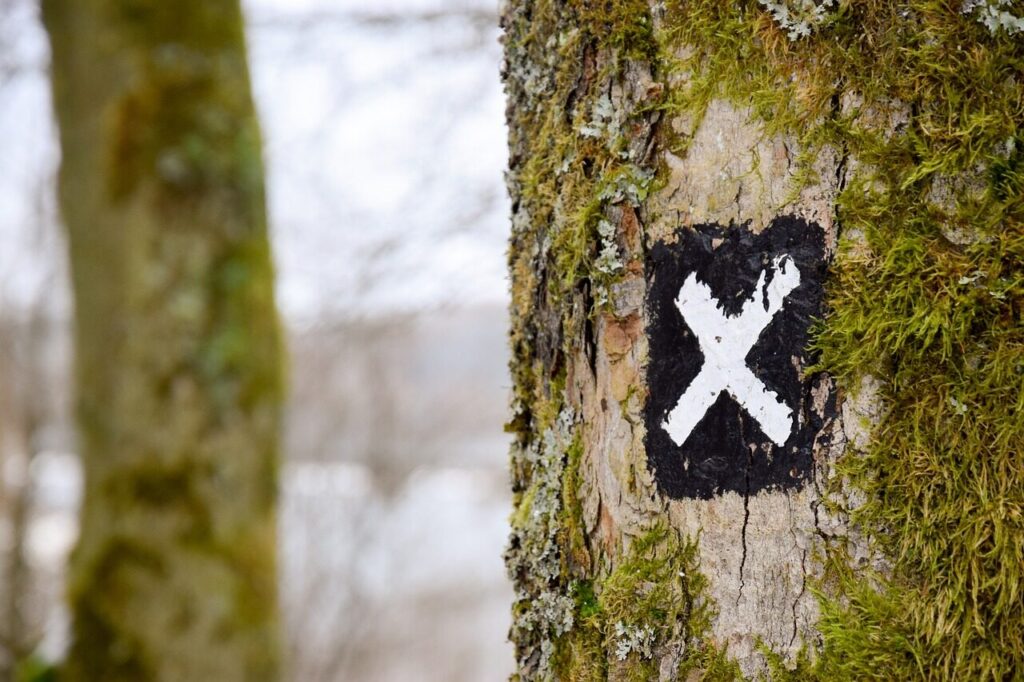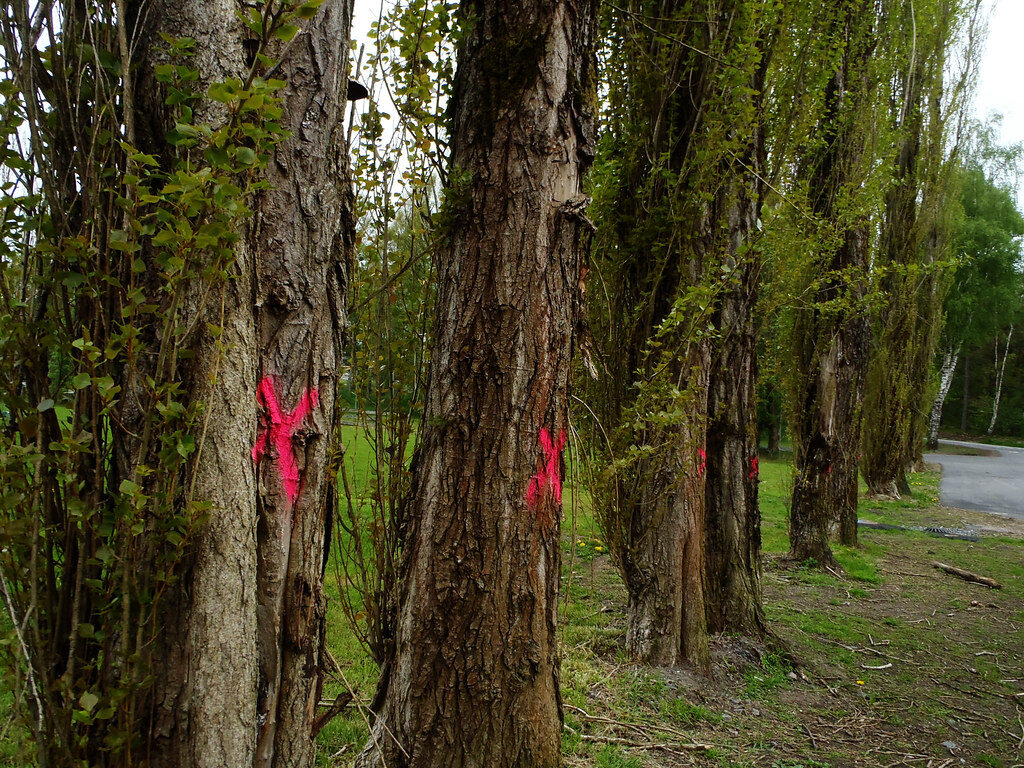When walking through parks, forests, or even along city roads, you might notice trees painted with colored markings like red, blue, yellow, or purple. These markings might seem random, but they serve specific purposes. Forestry workers, surveyors, and utility companies use these colors to communicate information about the tree’s status, ownership, or planned activities. Each color holds meaning; some indicate preservation, while others mark removal or property boundaries. Understanding these codes promotes awareness of how natural areas are managed and helps prevent misunderstandings. Next time you see a marked tree, you’ll know it carries an important environmental message.
Red Paint

Red paint is one of the most common tree markings and typically signals removal. Trees marked with red are often dead, diseased, or pose safety hazards such as leaning dangerously near roads or power lines. Foresters also use red to identify trees that interfere with construction projects or other development plans. The color’s high visibility ensures it can be seen from a distance, making it ideal for workers who need clear direction during clearing operations. Red paint is essentially a warning sign that the tree is scheduled for cutting or removal soon.
Blue Paint
Blue paint often indicates ownership, preservation, or boundaries. In forestry management, blue markings can signify trees that should remain untouched because they are part of a conservation area. Utility companies may also use blue to mark trees near water sources or pipelines. In some cases, blue identifies property lines to prevent disputes between neighboring landowners. The color stands out clearly in most environments, ensuring its meaning is easily recognized. When you see blue paint on a tree, it generally means the tree has protective or boundary significance and should not be disturbed.
Yellow Paint
Yellow paint usually serves as a cautionary symbol, drawing attention to trees that need monitoring or maintenance. It may indicate trees affected by pests or diseases that require future inspection. In urban settings, yellow can mark trees located near power lines, sidewalks, or buildings where trimming might be necessary. Foresters sometimes use yellow to signal temporary work zones where activity is planned but not yet approved. Its bright color makes it visible even from afar, alerting workers or passersby to exercise care around the area. Yellow paint represents caution rather than immediate removal or preservation.
Orange Paint
Orange paint is typically used for surveying or logging purposes. It helps identify trees within project boundaries for activities like timber harvesting, replanting, or road construction. Surveyors rely on orange markings to outline zones for mapping and measurement since the color is highly visible in natural settings. Sometimes, orange paint is applied temporarily to show planned development areas that may change depending on environmental assessments. The color does not always mean removal, but signals that the area is under evaluation. Orange markings play a vital role in coordinating large-scale forestry and land management operations.
White Paint

White paint is often used to enhance visibility, especially in low-light or snowy conditions. It can mark trail routes, roadsides, or boundaries for safe navigation. Forestry crews may use white paint to identify no-cut zones or trees serving as landmarks in a mapped area. Because of its neutral appearance, white paint is easy to spot without being too distracting in natural landscapes. It’s also commonly applied to trees along hiking paths or rural roads for orientation purposes. Essentially, white paint helps guide people and vehicles while protecting certain trees from unintended disturbance.
Purple Paint
Purple paint carries a legal meaning in many U.S. states. It is commonly used to mark private property boundaries, serving as a substitute for “No Trespassing” signs. This system helps landowners protect their property without relying on physical signs that can fade or fall over time. The use of purple is officially recognized by state laws, particularly in rural and forested areas. When you see purple paint on trees or fence posts, it means entry without permission is prohibited. It’s a simple yet effective way to communicate land ownership and prevent unauthorized access.
Green Paint
Green paint often represents trees that are healthy and intended for conservation. Arborists and environmental agencies use green markings to identify trees that contribute to ecosystem balance, serve as habitats, or hold educational importance. These trees might also be part of reforestation or research programs where preservation is crucial. The color green symbolizes growth, renewal, and life, making it an ideal choice for trees with ecological value. When you see green paint, it usually means the tree is being protected or monitored to ensure long-term environmental sustainability.
Pink Paint

Pink paint is commonly used by surveyors and construction planners to outline project zones, measurement points, or potential development areas. It is a temporary marking that guides mapping and infrastructure layout, but doesn’t usually relate to tree health. Pink stands out clearly against natural backgrounds, making it effective for short-term projects requiring visibility and precision. Survey teams use pink markings to mark where structures, utilities, or boundaries will be placed. Once the project progresses or concludes, these markings are typically removed or fade over time, leaving minimal environmental impact.
Comments